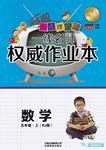题目内容
As a young girl, Margaret “Mattie” Knight never played with dolls, preferring to make toys for her brothers instead. In 1849, Knight went to work in a cotton factory where she witnessed a “shuttle,” a device that carries thread back and forth across a textile loom(纺布机), fly off the machine when the thread broke, striking and killing a young boy about her own age.
The 12-year-old Knight developed a safety mechanism that made it impossible for a shuttle to leave the loom. The design was so effective, soon virtually every new power loom carried her invention, saving countless workers from injury or death. Being so young, she didn’t bother to patent the device, so she never received payment.
Knight wouldn’t make the same mistake later in life when she invented a machine that could produce flat-bottomed paper bags. Knight had built a small wooden model in her home, but she needed a metal version to show it could hold up to the stress of mass production. So she hired Charles Annan to make the full-sized machine for her, only to have him try to claim the patent for himself. When Knight sued(起诉), Annan’s argument was that the design had to be his, because no woman could possibly understand the complex mechanics. Knight proved him wrong when she brought back her wooden prototype and explained how every part worked. She won the case in 1871, making her the second woman to hold an American patent. Over a hundred years later, her design is still used as the basis for many modern flat-bottom bag machines.
But that wasn’t the last the world heard of Mattie Knight. During her lifetime, she made about 90 inventions and received 26 patents, becoming one of the most productive female inventors of the 19th century.
1.We can learn from Paragraph 1 that ________.
|
A.Knight behaved like boys |
B.Knight had an unhappy childhood |
|
C.Knight did a poor job of making toys |
D.Knight liked inventing things as a child |
2.What do we know about Knight’s first invention?
|
A.It is still used today. |
B.It brought her great profit. |
|
C.It was made when he was 20. |
D.It reduced injuries at textile plants. |
3.Knight sued Charles Annan because he _______.
|
A.stole the wooden model for the machine she invented. |
|
B.failed to make the full-sized machine for her |
|
C.tried to patent her invention for himself |
|
D.kept the metal version for himself |
4.What would be the best title for the text?
|
A.Mattie Knight’s fight for her patent |
B.A great woman in the 19th century |
|
C.“The female Edison”, Mattie Knight |
D.Great inventions, great woman |
1.D
2.D
3.C
4.C
【解析】文章是关于一位女发明家Mattie Knight的故事。
1.推理题。根据文章第一句As a young girl, Margaret “Mattie” Knight never played with dolls, preferring to make toys for her brothers instead可知她喜欢制作玩具,喜欢发明小东西。
2.细节题。根据第二段第三行saving countless workers from injury or death.
3.细节题。根据第三段第五行only to have him try to claim the patent for himself.
4.主旨大意题。文章是关于一位女发明家Mattie Knight的故事。

 培优好卷单元加期末卷系列答案
培优好卷单元加期末卷系列答案 一线名师权威作业本系列答案
一线名师权威作业本系列答案I’ve loved my mother’s desk since I was just tall enough to see above the top of it as Mother sat doing letters(学问). Standing by her chair, looking at the ink bottle, pens, and white paper, I decided that the act of writing must be the most wonderful thing in the world.
Years later, during her final illness, Mother kept different things for my sister and brother. “But the desk”, she said again, “is for Elizabeth.” I never saw her anger, never saw her cry. I knew she loved me; she showed it in action. But as a young girl, I wanted heart-to-heart talks between mother and daughter. They never happened. And a gulf opened between us. I was too emotional. But she lived “on the surface”.
As years passed, I had my own family. I loved my mother and thanked her for our happy family. I wrote to her in careful words and asked her to let me know in any way she chose that she did forgive(原谅)me. I posted the letter and waited for her answer. None came. My hope turned to disappointment, then little interest and, finally, peace-it seemed that nothing happened. I couldn’t be sure that the letter had even got to Mother. I only knew that I had written in, and I could stop trying to make her into someone she was not.
Now the present of her desk told me, as she’d never been able to, that she was pleased that writing was my chosen work. I cleaned the desk carefully and found some papers inside-a photo of my father and a one-page letter, folded and refolded many times. Give me an answer, my letter asks, in any way you chose. Mother, you always chose the act that speaks louder than words.
【小题1】The writer began to love her mother’s desk _______.
| A.after Mother died. | B.before she became a writer. |
| C.when she was a child. | D.when Mother gave it to her. |
| A.Mother was cold on the surface but kind in her heart to her daughter. |
| B.Mother was too serious about everything her daughter had done. |
| C.Mother cared much about her daughter in words. |
| D.Mother wrote to her daughter in careful words. |
| A.deep understanding between the old and the young. |
| B.different ideas between the mother and the daughter. |
| C.free talks between mother and daughter. |
| D.part of the sea going far in land. |
| A.She had never received the letter. |
| B.For years, she often talked about the letter. |
| C.She didn’t forgive her daughter at all in all her life. |
| D.She read the letter again and again till she died. |
| A.My Letter to Mother. | B.Mother and Children. |
| C.My Mother’s Desk. | D.Talks between Mother and Me. |